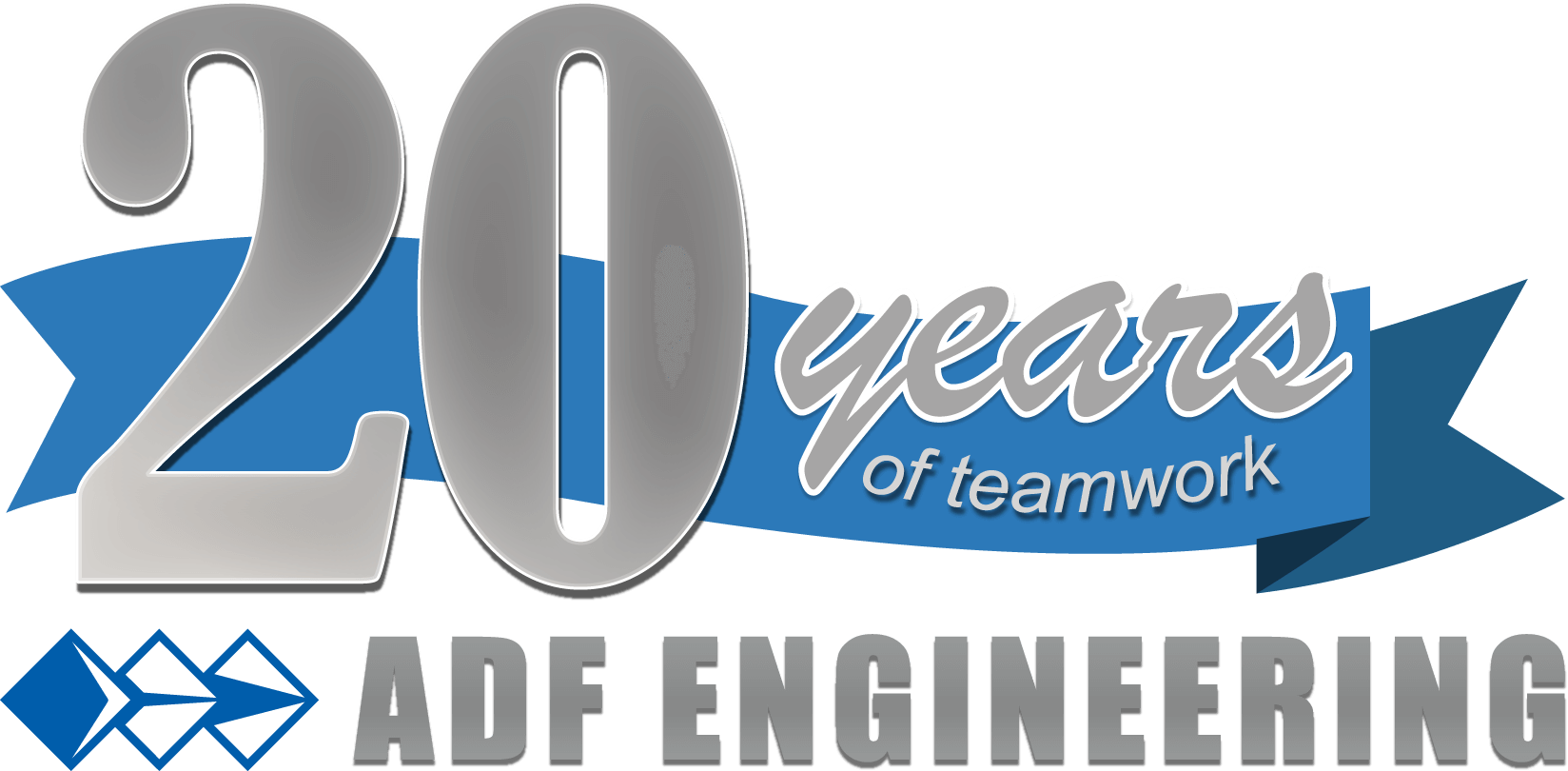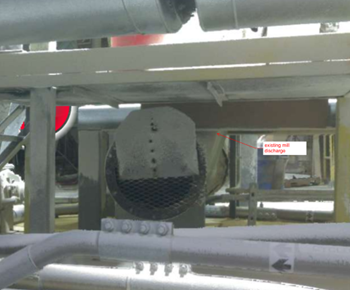Corn Milling DHA Case Study
Industry: Food Manufacturing
Purpose of the Case Study
This case study describes a DHA that ADF performed for a dry corn mill that produces masa flour.
This older site was replacing a worn mill but the site itself was not in compliance with NFPA 660 requirements.
Brief Overview of Dust Hazards
Combustible dusts are finely divided solid particles that can ignite and explode when suspended in air under certain conditions. These particles can originate from various materials and industries, including agriculture, manufacturing, and chemical processing.
In industrial settings, combustible dusts pose a significant threat due to their potential to cause fires and explosions, leading to injuries, fatalities, and property damage. Understanding and managing combustible dust is crucial for ensuring workplace safety and compliance with NFPA 660, the Standard for Combustible Dusts and Particulate Solids.
A requirement of NFPA 660 is for every facility that handles or generates combustible dusts to perform a Dust Hazard Analysis (DHA) to identify the hazards and to develop a plan to implement necessary mitigation steps identified during the DHA.
Project Background and Context
A corn mill in Iowa was replacing a worn-out hammermill used to grind whole corn to produce masa powder. The mill is tightly placed between a feed weigh belt and a vacuum pneumatic transfer line, which also provides fresh air to cool the mill.
There is no isolation between the mill and the belt or the pneumatic line and no explosion protection on the mill itself as required originally by NFPA 61 and now by NFPA 660.
The fresh air inlet side of the transfer line is only a few feet away from the mill itself and is open to the occupied mill room.
This is a direct path of least resistance for a potential explosion from the mill and would direct a fireball into the room. Fortunately, the corn in the mill is wet from steeping upstream of the dryer.
Facility Description
Facility Overview
The client’s facility is a dry corn mill in Iowa.
The Company’s Process and Operations
Whole corn is milled wet directly into a direct-fired flash dryer. A series of cyclones and sifters separate the masa from the wet air and fines.
The site has experienced multiple fires in the flash dryer at the cyclones. Explosion protection was provided at the cyclones but not at the mill.
ADF’s Dust Hazard Analysis Methodology
Assessment Techniques
The first step in the process is to determine the combustibility characteristics of the dusts handled on the site, based on one or more of the following:
- Historic facility data or published data that are representative of current materials and process conditions; or
- Data provided by raw material suppliers for unaltered raw materials; or
- Analysis of representative samples by testing at a qualified lab.
The specific combustible dust characteristics which need to be determined for each dust includes the following:
A. Kst (relative measure of the explosive potential of the dust, used for sizing vent panels and determining dust hazard classification)
B. Pmax (maximum pressure developed by explosion, used in equipment design)
C. dP/dt max (rate of pressure rise, used in detection instrument design)
D. MEC (minimum explosible concentration, determines limits on dust quantities which may present a hazard)
E. MIE (minimum ignition energy, determines sensitivity to ignition sources)
F. MIT (minimum ignition temperature for dust layer, used in electrical component design, particularly insulation class)
Once the dust characteristics are identified, the next step is to set up the DHA by determining the appropriate areas of risk in the process from current Process Flow Diagrams or P&ID’s, which must accurately show all dust collection or aspiration system connections.
The actual DHA review meeting may then be held at the site and must include the following participants, at minimum:
A. Qualified DHA Facilitator
B. Site Engineer
C. Experienced Operator and/or Maintenance Personnel
D. Facility or Operations Manager
E. Site Safety Manager
The duration of the on-site DHA review depends upon the overall complexity and size of the facility, the variety of dust handled and the accuracy and completeness of the process documentation. Information to be identified and evaluated at the DHA includes:
A. Review of all dusts handled and their combustibility characteristics
B. Identification of all potential areas of risk and likelihood
C. Credible ignition sources and suspension mechanisms
D. Safe operating ranges
E. Explosion prevention and protection methods
F. Explosion propagation paths
G. Recommendations for additional protection measures
Finally, the DHA Facilitator will summarize the identified hazards, dust characteristics, current and proposed dust explosion prevention and protection measures and agreed upon implementation plan and schedule to address all gaps in combustible dust risk compliance.
It is this DHA implementation plan to which the site will be held accountable in the event of an OSHA audit or combustible dust incident investigation.
Furthermore, all future changes to the processes or dusts handled must be documented through a Management of Change procedure to determine necessary dust safety system changes and kept with the official DHA documentation by the facility safety coordinator.
Data Collection
The client collects and ships samples per ADF’s direction to the chosen lab for combustibility testing. A typical sample is about 2 liters.
Risk Identification
ADF’s DHAs are done using our proprietary process that combines a checklist-based analysis with a traditional HAZOP approach, utilizing each for their specific strengths to provide a comprehensive analysis.
Project Findings and Analysis
Hazard Identification
The only combustible dust at this site is dried masa flour, but different particle size cuts exist at different points in the process.
Risk Assessment
ADF’s proprietary DHA approach differentiates the likelihood of a flash fire or deflagration event based on the presence of the components necessary for such an event – namely fuel, credible ignition source, oxygen, containment, and dispersion.
Safety Systems Evaluation
ADF had previously evaluated the existing explosion and fire protection systems on the dryer. However, there were no pre-existing explosion protection or isolation devices on the mill.
ADF’s Post Analysis Recommendations
Preventive Measures
The DHA identified the need for explosion isolation downstream of the new mill on both sides of the pneumatic transfer line. Isolation upstream of the mill was deemed unnecessary due to the high moisture content of the whole corn.
The area classification for the mill room was changed to Class II Group G Div 2.
Employee Training and Awareness
Staff training programs for Dust Hazard awareness were identified as a necessity in the checklist-based DHA review.
DHA Implementation—Our Project Management Approach
ADF’s Project Planning and Execution
ADF managed the replacement mill installation.
Timeline and milestones
The mill replacement project is currently ongoing.
Innovative Solutions and Technologies
The tight spaces above and below the mill were prohibitive to installing explosion isolation. The DHA identified that isolation upstream is unnecessary.
Downstream of the mill, explosion isolation was located on either side of the mill directly on the pneumatic transfer line.
A new technology for passive isolation on pneumatic air inlets was identified for the fresh air inlet located inside the mill room.
Continuous Improvement
Two more sister sites will be able to implement this technology.
Project Conclusion
Summary of Key Findings
A new technology is available to passively isolate short air inlet lines on pneumatic systems.
Summary of DHA Implementation
ADF is currently supporting the installation of the new mill.
Additional Resources and Educational materials
Webinars:
Updates to Combustible Dust Standards
When Disaster Strikes: Mastering Process Safety in Crisis Situations
Contact Us To Schedule Your DHA
If you need to complete your DHA or update your current DHA, please contact us to schedule a time to discuss how we can assist you.


